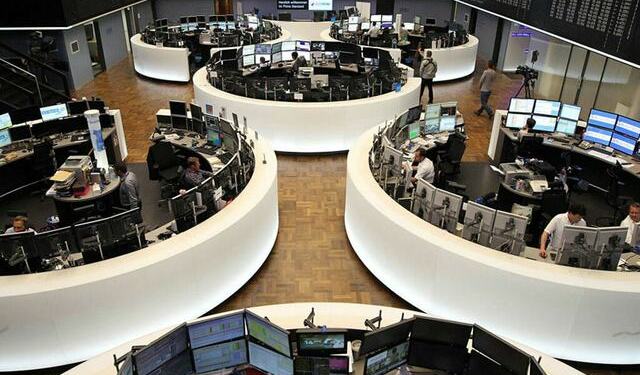LONDON: Britain’s pound edged lower against the dollar on Monday as worries over divisions within the ruling Conservative Party as well as uncertainty over the Bank of England’s interest rate outlook left the currency on unsteady ground.
Sterling had recovered from an 11-day low against the dollar on Friday on signs of progress in talks over Britain’s departure from the European Union.
Investors regained confidence after EU leaders said they would begin preparations to move into the second phase of Brexit talks in December, a step forward that would allow Britain’s future trade relationship with the bloc to be discussed.
But reports in weekend newspapers that opposition politicians could ally with opponents in Prime Minister Theresa May’s Conservative Party to challenge her Brexit strategy raised concerns that domestic divisions could see the talks stall and unwind any progress.
“Over the weekend we’ve seen a lot of press indicating that there are divisions in the party,” said Jane Foley, senior currency strategist at Rabobank.
“So there is this cloud of uncertainty, not just related to the progress of Brexit talks but also to the divisions within the governing party.”
The pound was trading down 0.1 percent against a stronger dollar at $1.3175 on Monday, having dipped to $1.3087 on Friday, its weakest since Oct. 9, before recovering after developments in Brussels.
Against the euro, it was up 0.1 percent at 89.16 pence .
May said on Friday that EU leaders need not be concerned about the current budget plans, that Britain would honour the commitments it had already made as a member of the bloc and that she was optmisitic about winning a good Brexit deal.
“Sterling was the big winner after Friday’s EU summit ended with some surprisingly conciliatory words on both sides,” Marshall Gittler, chief strategist at ACLS Global, said.
“I expect the optimism from Friday’s upbeat Brexit comments to fade quickly and for the pound to weaken as a result.”
As well as Brexit developments, investors are eyeing third-quarter GDP data for Britain due on Wednesday for clues on the likelihood of an interest rate rise from the BoE next month.
Although a majority of investors still expect the Bank to hike rates, that majority has fallen, and weak growth data could add to doubts.
“The implied probability of a BoE hike next week slipped from 70 percent to 65 percent last week and may fall further on a soft GDP report,” said Adam Cole, chief currency strategist at RBC Capital Markets.
“Near-term risk for sterling therefore remains to the downside.”
Source: Brecorder.com




























